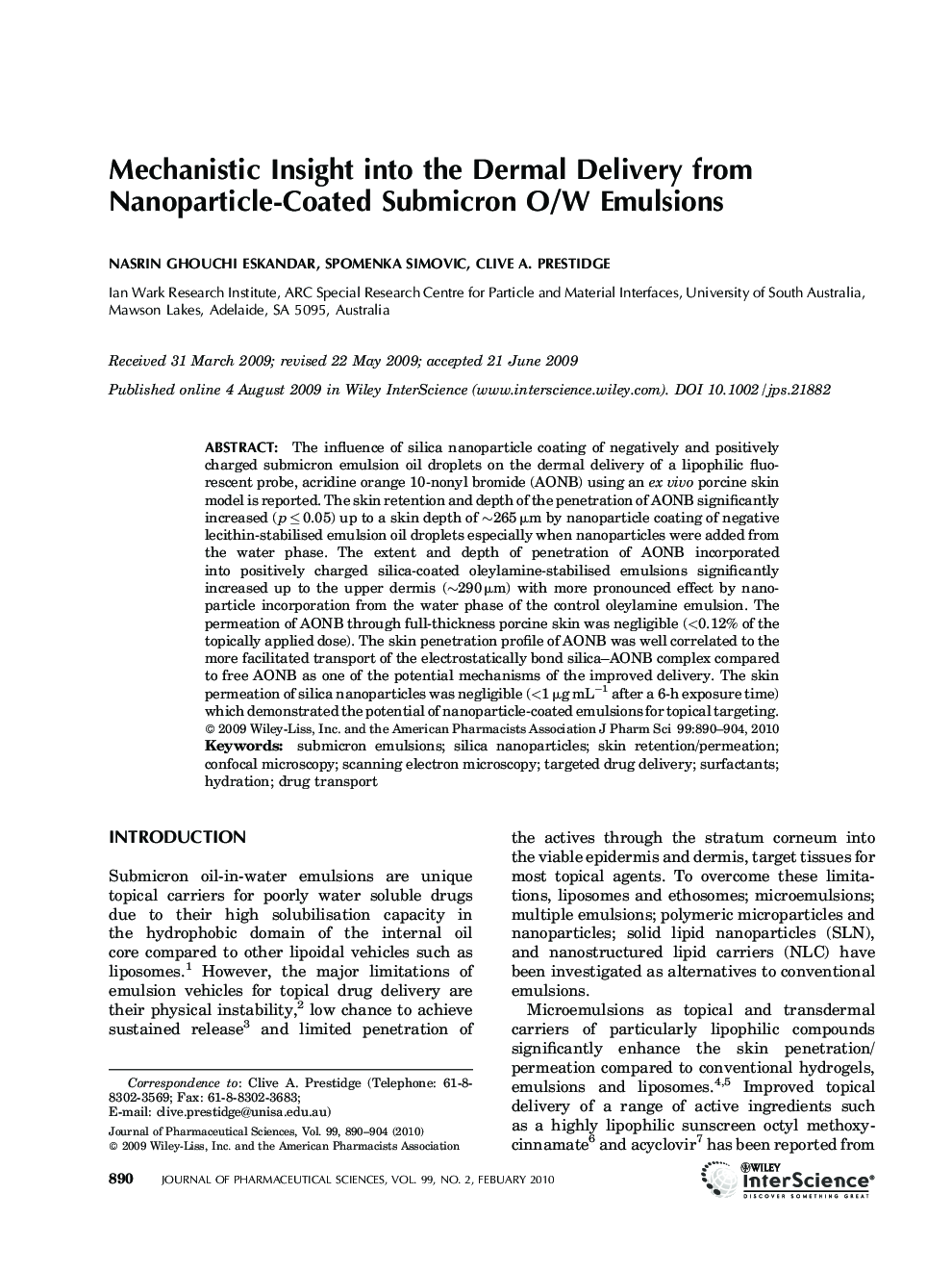| Article ID | Journal | Published Year | Pages | File Type |
|---|---|---|---|---|
| 2486493 | Journal of Pharmaceutical Sciences | 2010 | 15 Pages |
Abstract
The influence of silica nanoparticle coating of negatively and positively charged submicron emulsion oil droplets on the dermal delivery of a lipophilic fluorescent probe, acridine orange 10-nonyl bromide (AONB) using an ex vivo porcine skin model is reported. The skin retention and depth of the penetration of AONB significantly increased (pââ¤â0.05) up to a skin depth of â¼265âµm by nanoparticle coating of negative lecithin-stabilised emulsion oil droplets especially when nanoparticles were added from the water phase. The extent and depth of penetration of AONB incorporated into positively charged silica-coated oleylamine-stabilised emulsions significantly increased up to the upper dermis (â¼290âµm) with more pronounced effect by nanoparticle incorporation from the water phase of the control oleylamine emulsion. The permeation of AONB through full-thickness porcine skin was negligible (<0.12% of the topically applied dose). The skin penetration profile of AONB was well correlated to the more facilitated transport of the electrostatically bond silica-AONB complex compared to free AONB as one of the potential mechanisms of the improved delivery. The skin permeation of silica nanoparticles was negligible (<1âµgâmLâ1 after a 6-h exposure time) which demonstrated the potential of nanoparticle-coated emulsions for topical targeting. © 2009 Wiley-Liss, Inc. and the American Pharmacists Association J Pharm Sci 99:890-904, 2010
Keywords
Related Topics
Health Sciences
Pharmacology, Toxicology and Pharmaceutical Science
Drug Discovery
Authors
Nasrin Ghouchi Eskandar, Spomenka Simovic, Clive A. Prestidge,
